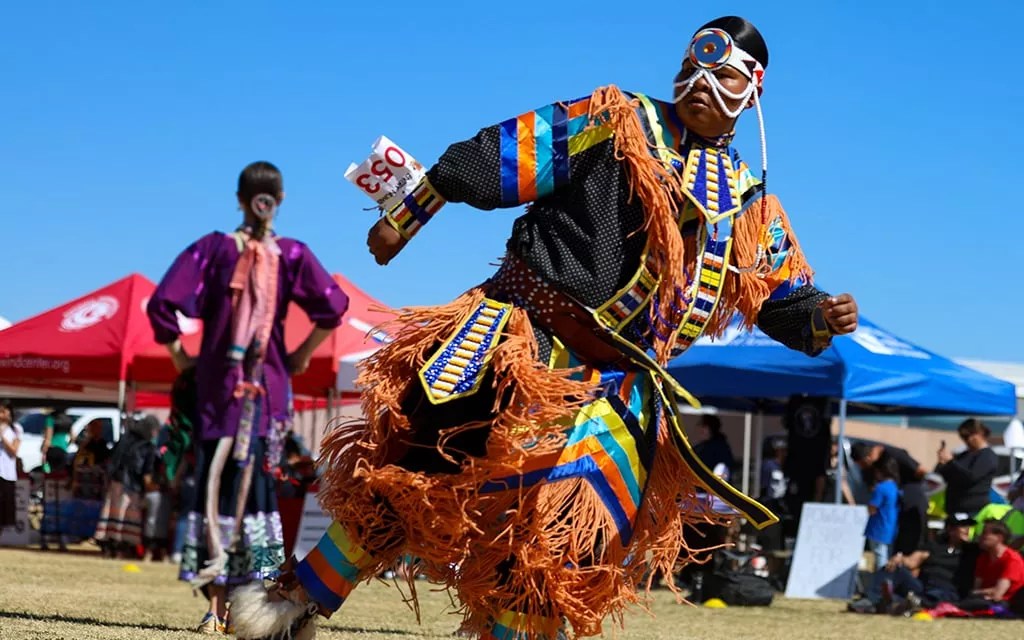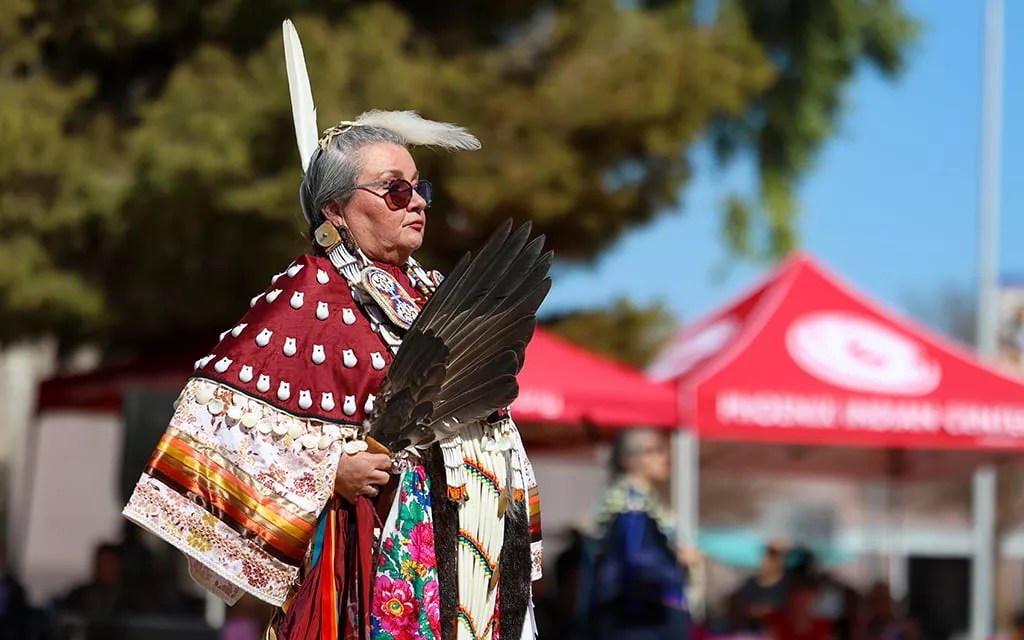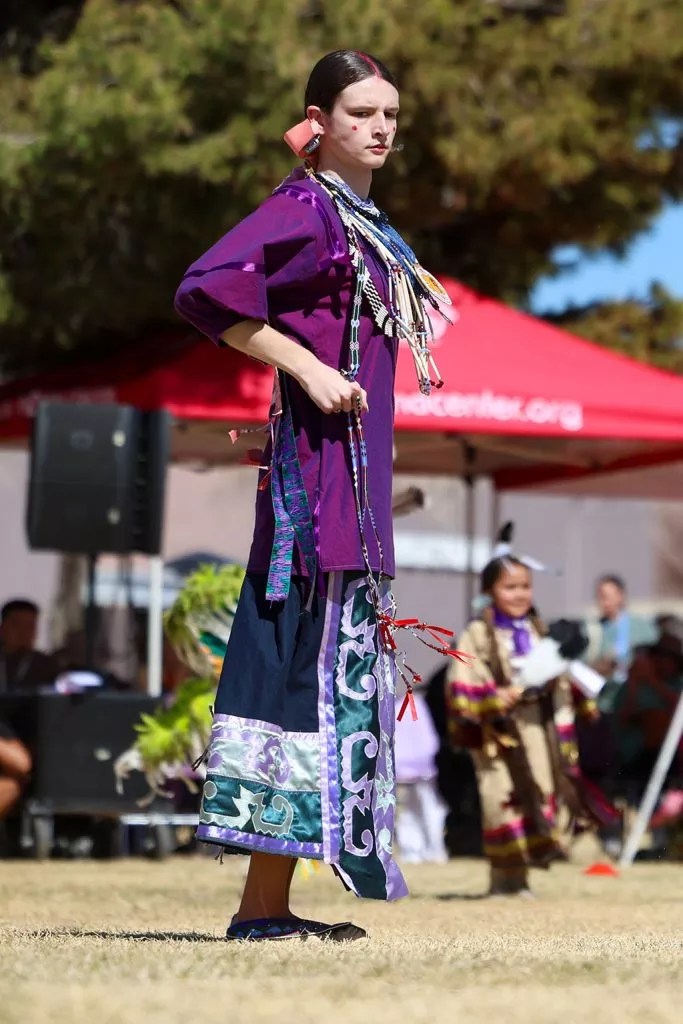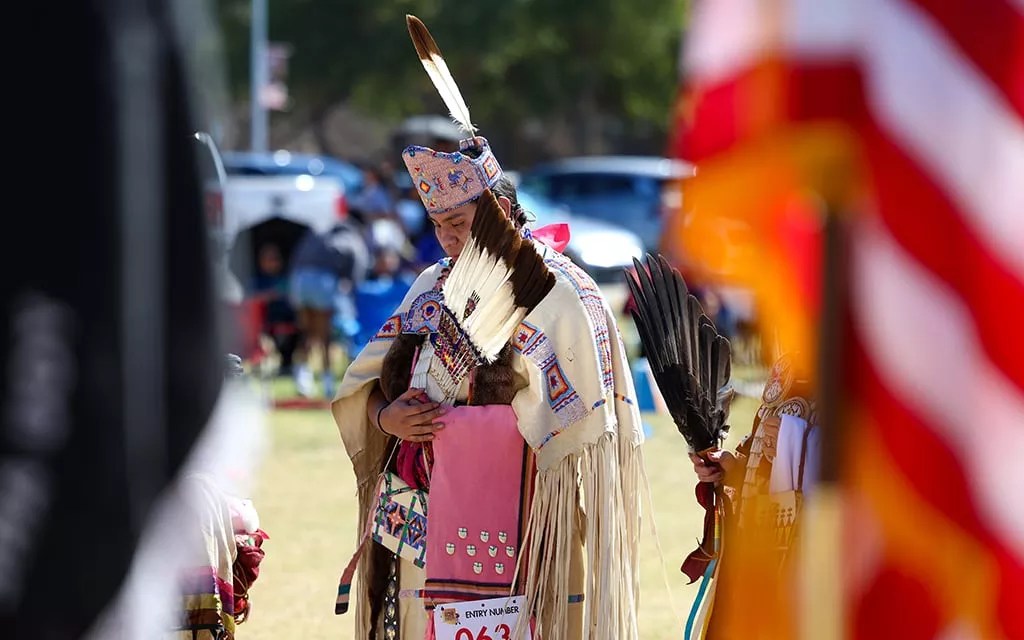
Alexis Heichman/Cronkite News

Audio By Carbonatix
The Arizona Two Spirit Powwow returned to Phoenix on Saturday to spotlight Indigenous LGBTQ+ and two-spirit people for a day of cultural celebration and community.
Hosted at South Mountain Community College, the event welcomed dancers, drum groups and attendees from across the region. More than just a traditional gathering, the powwow allowed two-spirit individuals to celebrate their identities and honor their place in Indigenous culture.
“This (powwow) is a perfect example of a safe space for people to come and dance in whatever category they want to dance in, dress the way that they feel good about themselves, love who they want to love, and they are safe here. This tells the community we are here, we are here for you,” Sheila Lopez says.
Lopez is the founder of Arizona’s first Two Spirit Powwow and the first Native chapter of PFLAG, which bills itself as the country’s largest advocacy organization that supports LGBTQ+ individuals and their families.
This year, make your gift count –
Invest in local news that matters.
Our work is funded by readers like you who make voluntary gifts because they value our work and want to see it continue. Make a contribution today to help us reach our $30,000 goal!
President Donald Trump’s recent executive actions have left transgender and two-spirit communities uncertain about their rights and recognition going forward.
“It is super important right now with the administration, what they’re doing to pretty much wipe away trans people. It’s super critical right now for us to continue to show up in the community, to say we’re here, we’re not going anywhere and you can’t erase us, period,” Lopez says.

Dancer Lynnette Morin performs at the Phoenix Indian Center Third Annual Two Spirit Powwow on Feb. 22, 2025, at South Mountain Community College in Phoenix.
Alexis Heichman/Cronkite News
The term “two spirit” describes individuals who embody masculine and feminine qualities. Unlike the concept of being transgender, two spirit is not solely about gender identity. It encompasses spiritual, social and ceremonial roles that differ by tribe. While some two-spirit individuals may also identify as trans, the term itself reflects a broader understanding of gender and community responsibilities within Indigenous cultures.
Two-spirit individuals have existed for centuries in Indigenous cultures, but the term itself is modern. It was proposed in 1990 at a gathering of Native LGBTQ+ people. Though “two spirit” is now widely recognized, it doesn’t fully capture the different ways gender was understood in Indigenous communities long before the term was created.

Head dancer River Webb performs at the Phoenix Indian Center Third Annual Two Spirit Powwow on Feb. 22, 2025, at South Mountain Community College in Phoenix.
Alexis Heichman/Cronkite News
For many Indigenous people who can be described as two spirit, that isn’t their primary identity. River Webb, a member of the Nez Perce and Meskwaki tribal nations, says she first identifies with the term used in her Native language, which carries cultural and spiritual meanings tied to specific roles and responsibilities within her tribe.
“Before I would identify as two spirit, I identify as ‘eyeigewa,’ which is our word for it, because it’s just more accurate to who we are. The term ‘two spirits’ (is) contemporary, but ‘eyeigewa’ is a word that has existed for thousands of years, so I prefer to call myself that first,” Webb says. “It’s someone who’s a woman, but it’s not just any woman. It’s a woman who’s given a special medicine, who has changed, who is chosen.”
Webb emphasizes the power of powwows as a place for connection, particularly for individuals who have been pushed aside.
“This is the kind of space for people from all different tribes who have faced ostracization, who have felt like they’re not allowed to be in the dance circle. … And that’s really beautiful because that doesn’t exist in every tribe,” Webb says. “When I first stepped out as a woman, I’m lucky that I got to step into my tribe’s powwow grounds. But I know people who are told no.”
For Fentress LeBeau from Cheyenne River, South Dakota, the ostracism that many face only fuels his determination to stand out and set an example for younger Indigenous people.
“I just try to hit all those small reservations, like the regular powwows, just because I am showing that there are two spirit and showing the younger ones that are scared or feel like they don’t have that support that they can go out and do these things,” LeBeau says.
“Even back home, there’s still discrimination against me and I’ve lived there for 10 to 15 years,” he says. “Having these two-spirit powwows gives an outlet. … It may be a little bit more colorful, but we’re all doing the same thing.”

Dancer Kenneth Taylor listens to speakers at the Phoenix Indian Center Third Annual Two Spirit Powwow on Feb. 22, 2025, at South Mountain Community College in Phoenix.
Alexis Heichman/Cronkite News
The first two-spirit powwow was held in 2012 by the Bay Area American Indian Two-Spirits organization, according to Forbes. Since then, these gatherings have spread nationwide. The Arizona Two Spirit Powwow, founded in 2019, is overseen by Gerard Begay, the South Mountain Community College American Indian Student Center coordinator, who also identifies as two spirit.
“There are other people coming from other states, coming through and visiting us and being part of the celebration. So, yes, it has grown tremendously,” Begay says. “For me, it’s important to share that part of our culture because a lot of times we’re never brought up, or it’s hidden away.”
“By doing this, it puts us at a pedestal and puts us in the spotlight, and it allows us to celebrate our LGBT community at a different level,” he says.
For more stories from Cronkite News, visit cronkitenews.azpbs.org.